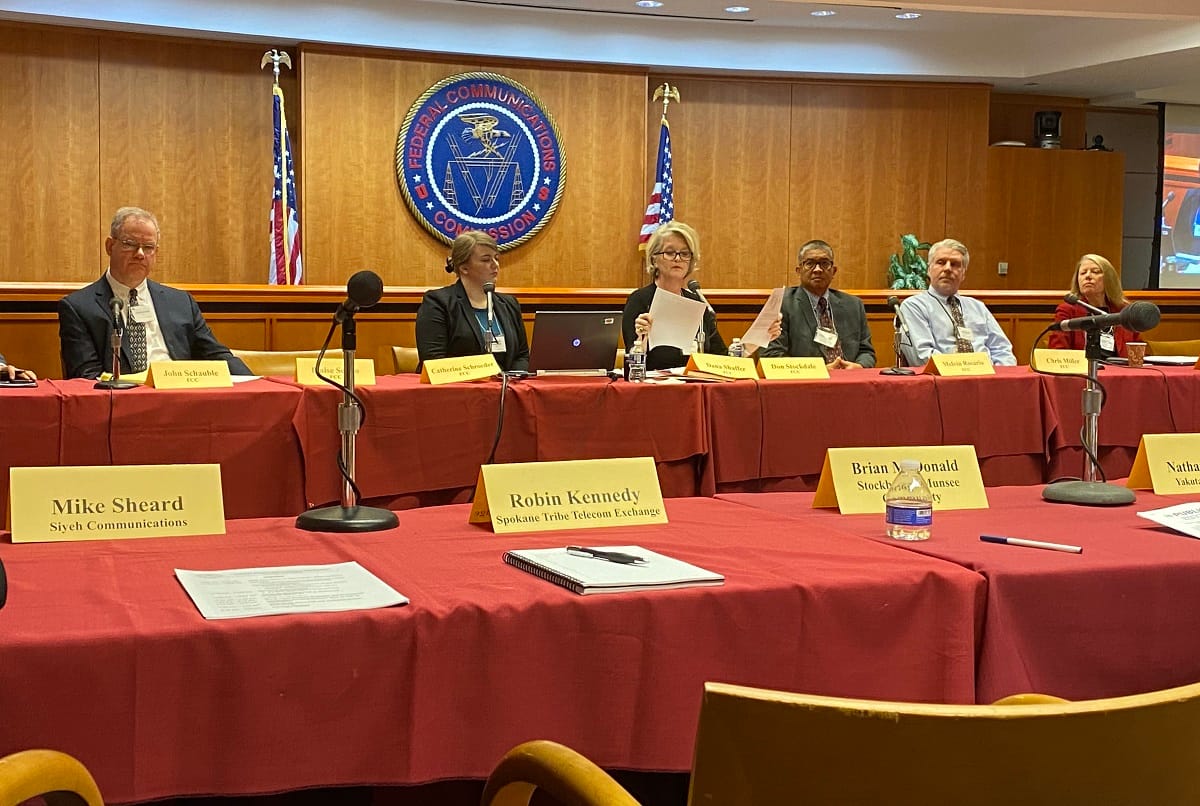Indian Tribes Will Have Six-Month Window of Opportunity to Apply for Former EBS Spectrum at 2.5 GigaHertz
WASHINGTON, January 14, 2020 – Federally-recognized Indian tribes will have a six-month priority window, beginning February 3, in which to apply for access to the radio frequency spectrum available at 2.5 GigaHertz (GHz). At a workshop at the Federal Communications Commission on Tuesday, Chairman Aj
Adrienne Patton

WASHINGTON, January 14, 2020 – Federally-recognized Indian tribes will have a six-month priority window, beginning February 3, in which to apply for access to the radio frequency spectrum available at 2.5 GigaHertz (GHz).
At a workshop at the Federal Communications Commission on Tuesday, Chairman Ajit Pai and agency officials detailed the eligibility requirements for access to the spectrum in the band of the federal airwaves that was previously referred to as the Educational Broadband Service. The window will run from February 3 until August 3, 2020.
Historically, educational services, including universities and school districts, has special access to the 2.5 GHz spectrum band.
When the FCC eliminated the education requirement in July 2019, Pai said tribal lands would have a priority window for free access to broadband, before commercial auctions.
Catherine Schroeder, senior advisor to the Wireline Competition Bureau, explained the benefits of 2.5 GHz in rural settings. As it is a midband spectrum, she said, 2.5 GHz combines the qualities of a lower band, but with greater broadband capacity.
Schroeder continued that 2.5 GHz is particularly useful in rural areas because it has high power limits, a lower frequency, and can travel through walls, windows, and densely wooded areas.
Because 2.5 GHz is already utilized with other radio frequency transmissions, Schroeder said that there is an “ecosystem of equipment” that can be relatively inexpensive because the education licensees have already used 2.5 GHz to deploy broadband or have leases with a commercial entity.
During the six-month window beginning February 3, Indian tribes seeking to apply would apply on the FCC website for rural areas in which the applicant’s tribe has a “local presence.”
Harold Chesnin, representing the Confederated Tribes of the Chehalis Reservation, was concerned about non-contiguous tribal lands. Dana Shaffer, chief of staff of the agency’s Wireless Telecommunications Bureau, replied that applicants can fill out waivers to turn in with their application.
Tribal lands will be able to define their license area and can apply for an overlay license. Although tribal areas will not be able to access spectrum or build on areas that are already covered, an overlay license is useful for areas that are partially covered.
If there is availability in one of the three channels, overlay licensees can request that slot.
There are buildout requirements, but it does not require that anyone be signed up for service. Schroeder explained that after the first two years, 50 percent of the population must be provided service, with 80 percent of the population to be covered within five years.
Shaffer clarified that rural areas do not have to use every megahertz within the spectrum range. The tribal lands that are approved can lease to a third party for buildout, but must maintain primary responsibility for the execution, completion, and buildout deadlines.
The FCC developed an improved mapping tool to help applicants know what channels are available on their lands. A search box and various color coding allows for simple maneuvering on the site. Users can follow links to see who has current licenses to those who have part of the spectrum, however, the site does not clarify if there is active deployment in those licensed areas.
In the case of a waiver to be filed with evidence for adding pockets of non-reservation lands to an area. The FCC made it clear that waivers are not to be used for access already-licensed spectrum. Furthermore, waivers are not guaranteed approval.
The FCC urged attendees to avoid applications for spectrum and areas that overlap.
Danae Wilson, a representative for Nez Perce tribe, wanted to know how an application might differ for tribes who are in the process of purchasing more land. The mapping data is based on the latest census, and those areas are only eligible for the 6-month window, said FCC Staff.
At the close of the priority window, the agency will move to an auction with bidding on the remaining spectrum in three channels at 2.5 GHz. Licenses will not be dispersed within the six months, but granted afterwards.
Shaffer said every federally recognized tribe has been contacted personally. FCC officials insisted that they want the initiative to be successful and feasible, and invited questions throughout the process.








Member discussion